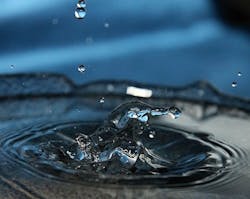Filtration is one of the core stages of water and wastewater treatment every industry professional should know about and understand. So what exactly is it? What are the different types? And how is it carried out in a water treatment plant or a wastewater treatment facility?
Definition
Filtration is the process in which solid particles in a liquid or gaseous fluid are removed by the use of a filter medium that allows the fluid to pass through while retaining the solid particles.
It may mean the use of a physical barrier, chemical, and/or a biological process. The removal of particles takes place with processes including: straining, flocculation, sedimentation and surface capture.
Basic requirements are: a filter medium (thin or thick barriers); a fluid with suspended solids; a driving force to cause the fluid to flow; and a the filter that holds the filter medium, contains the fluid, and permits the application of force.
What Are the Uses in the Water Industry?
In the water industry, clarified water is the goal of the filtering. It is primarily used for storm water, wastewater, and drinking water applications, but it also has uses in industrial manufacturing, power plants, food and beverage production facilities, mining and other heavy duty applications..
Water filtration can remove or reduce the concentration of suspended particles, parasites, bacteria, algae, viruses, fungi, and more chemical and biological contaminants.
In order for water to be filtered, it can only pass through the filter medium if some driving force is applied, which may be caused by gravity, centrifugation, application of pressure on the fluid above the filter, or other processes that use pumps, valves and pipes to produce enough pressure to push the water through the filter.
History
Before the industrial revolution, there is evidence that it was used in the manufacture of dyes, wines and beers.
There are drawings and writings from more than 6000 years ago that illustrate simple water filtration processes. Most notably, Ancient Sanskrit and Greek writings recommended water treatment methods.
These writings describe early water treatment as: “Impure water should be purified by being boiled over a fire, or heated in the sun or by dipping a heated iron into it and then allowed to cool, or it may be purified by filtration through sand and coarse gravel” (Jadhav, Aasawari, 2014).
What are the different types?
There are different types of water filters, such as strainers, precoat filters, slow sand filters, rapid gravity and pressure filters, membrane filters, and granular media filters.
Strainers & Straining
Straining is a very simple method in which water is poured through a piece of cloth, and can remove some of the suspended silt and solids, destroying some pathogens in the process.
Gravity
Gravity filtration is a method of filtering impurities by using gravity to pull liquid through a filter. This form of filtering occurs through beds of granular media and consists of interception, straining, flocculation, and sedimentation.
Membrane
Membrane filters utilize microfiltration and ultrafiltration, which can be effective in eliminating bacteria and/or act as pre-treatment before nanofiltration or reverse osmosis must occur.
Media
Media filtration systems filter water through a prescribed filter medium, including:
- Sand filters;
- Granular activated carbon;
- Woven or nonwoven fabric; and
- Metal screens.
Pressure
Pressure filters are contained in a steel pressure vessel. Perforated pipes or a steel plate with nozzles collect the filtered water and for distribution of the wash water and air scour.
